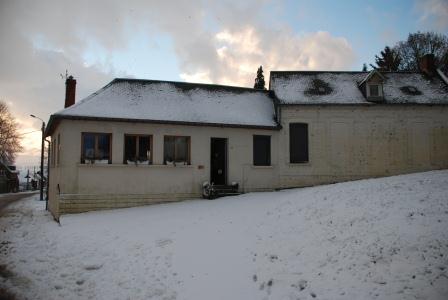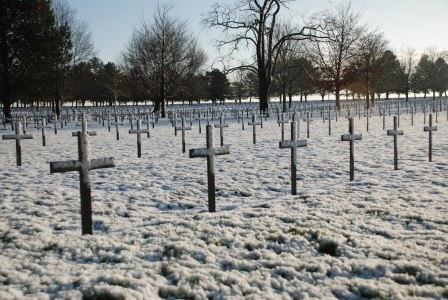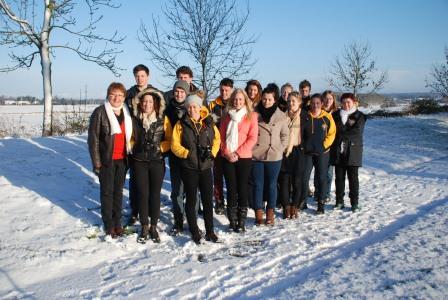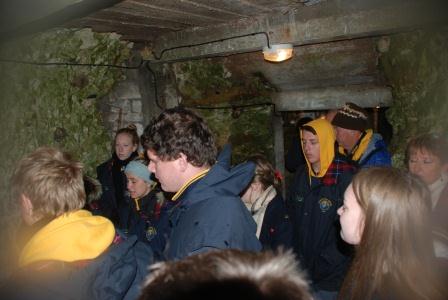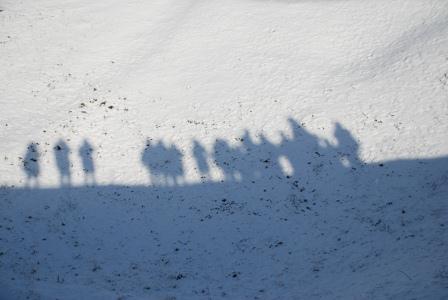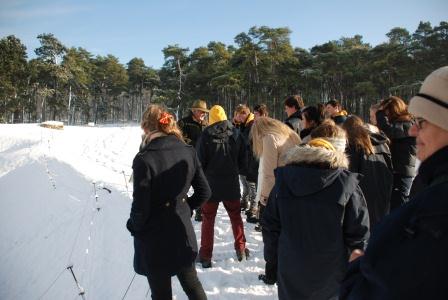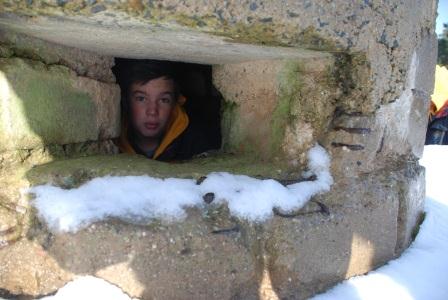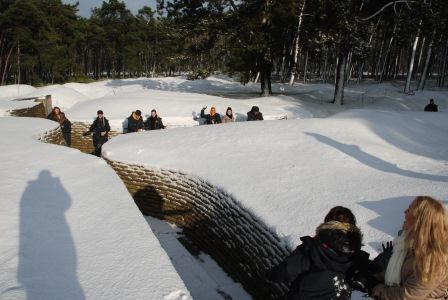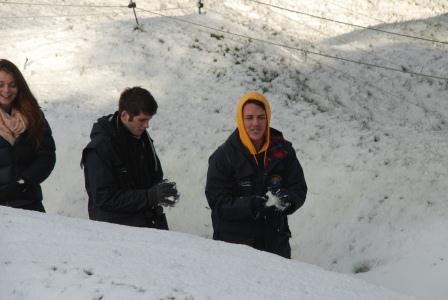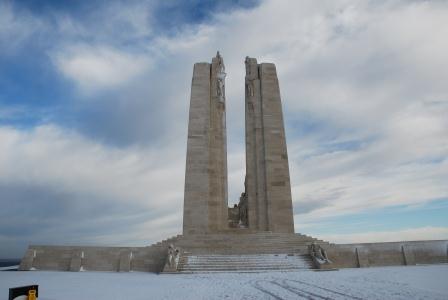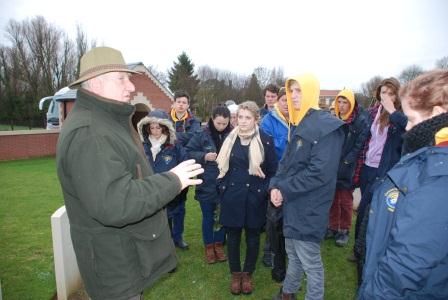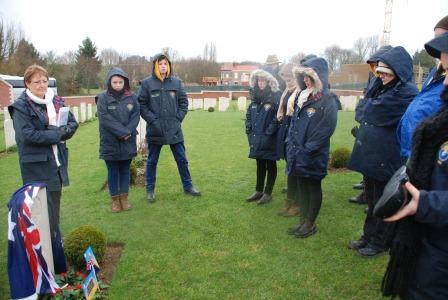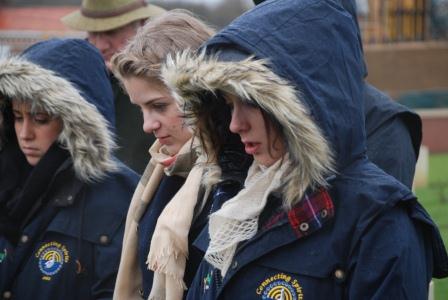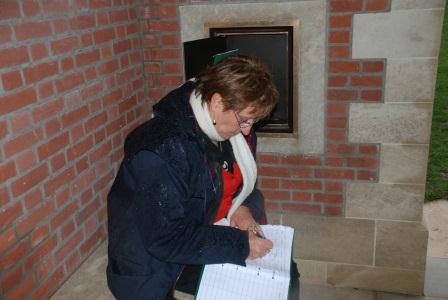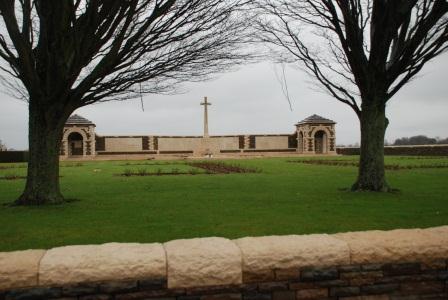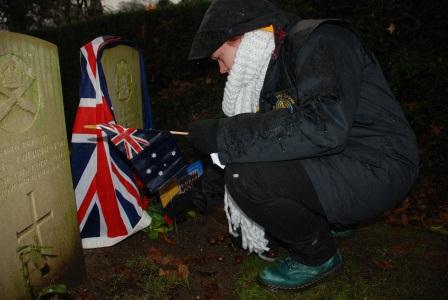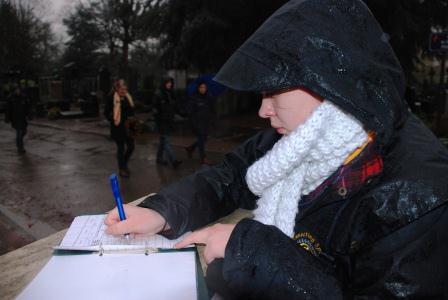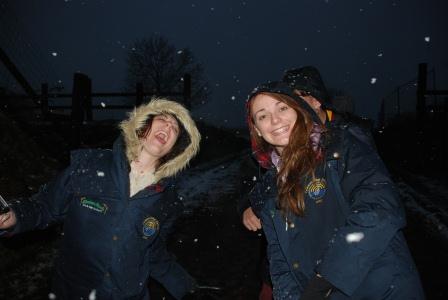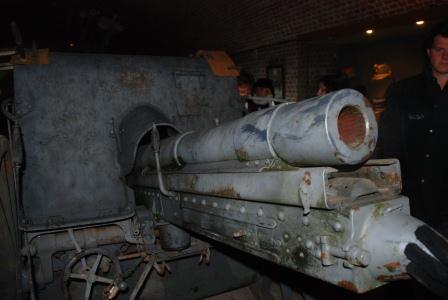7th December
Amiens to Ieper
We woke today to see snow in Amiens. We had an early start and first point of call was at Mailly-Maillet to pick up Rod from his house as he would be travelling with us and staying in Ieper, our new home for the next week. The snow was thick around his house and the ancient village looked like a postcard. From here we travelled through the city of Arras to a German cemetery at Neuville-St-Vaast which has the remains of over 80,000 German soldiers buried 4 to a cross or within a mass grave. The numbers are just mind blowing. From here we ventured just a bit further up the road to a French cemetery with 27000 white crosses, although there is a larger French cemetery not far up the hill. The next stop was the Canadian Memorial Park at Vimy Ridge. Here we were able to walk down into tunnels that were dug deep into the chalk and which contained 40000 men for up to 36 hours prior to the Battle of Vimy Ridge on April 9th 1917. Many of these tunnels lead into deep mine craters just in front of the German lines and has men stormed out of these they took the German lines by surprise and pushed them back some 300 metres to the top of the ridge, where there now stands a huge memorial to the Canadian Missing from the French battlefields. When we came out of the tunnels we then walked through trenches of the Canadian and German lines as they were before the battle. I had spoken to the group about not having snow fights in the memorial park area, but Rod threw the first snowball, and there was no stopping it after that. He quickly took off leaving me to restore some order. Thanks Rod.
We then moved to Fromelles, the site of the worst 24 hour period in Australian Military history. On the evening of the 19th July 1916, the Australian 5th Division along with the British 61st Division attacked the German lines here near a strong point known as the Sugarloaf. In the ensuing battle the division of approx 10000 men suffered 5533 casualties including almost 2000 dead. A number of the battalions involved were almost wiped out. As the frontline in this area did not change much throughout the war the remains many of those who died in no-man’s land remained undisturbed for over 2 years, and most of those could not be identified at the time. However, those who made it to the enemy lines before being killed were gathered up by the Germans and buried in a mass grave at a place called Pheasant Wood. These remains were discovered 90 years later and 250 of them have been buried in a new cemetery near the town. Of those almost half have been identified. They include Ray Pflaum, who came from Birdwood and was thought to have died as a German Prisoner of War in November 1916. This was due to a mis-understanding of the information supplied by the Germans during the war, and was ignored until Lambis Englozas started to search for those that were missing from this battle. In response to his identification and re-burial, Flo Bourke, a member of the 2006 CS group wrote a song and this was played in the cemetery after Julie commemorated him.
A windy and busy drive into Lille followed as we went to commemorate Sister Edith Moorehouse. Richard’s SATNAV sent him down some streets that were not made for buses, and there were times that we thought we may get stuck. But persistence paid off and we got to the cemetery although by then the rain was pouring down, and we had our first really wet commemoration for the trip.
Anne Molinaro
I've been researching Sister Moorehouse for a long time and I knew her story. But being at her grave made her story come to life; for the first time I truly understood the courage of this woman and the emotion was overwhelming. I could only hope to show the strength she had.
By the time we got back on the bus the rain had turned to snow and a white covering was reforming as we entered Fort Seclin. This was an old World War 1 fort built to defend France but was made redundant by the outbreak of the war due to improvements in artillery. The Fort is now a privately owned museum and restaurant, and has a fine collection of artillery pieces and other weapons and memorabilia from that time in history. After our tour of the collection we enjoyed a good meal with our hosts and Julie’s good friend Carole, and her daughter Dotty.
From here we made our way across the Belgian border into Ieper and our next hotel for a week.
Jack Bricknell
Today was a roller coaster of emotions. Visiting the Canadian memorial and going through the tunnels that they made and walking through allied and German trenches was such a great experience and to go in the machine gun bunker and look through that little slit was awesome. After that we had a snowball fight, running through the trenches and taking cover in them was so fun. Then we visited pheasant wood where a few hundred Australians are buried. Then Julie told us the touching story of a 19 year old called Ray Pflaum. After hearing this emotional story Mal proceeded to play a song called 'known unto god' by Flo who was a former Connecting Spirits participant. It was such an emotional day but one that will stay with me for years to come.
Josh Weatherly
Wow snow!! There is a thick blacket of snow as far as the eye can see! Many paddocks are covered, where as some housing areas are not! Weird!
The amount of graves for the german soldiers is immense. The moving of all the graves to one cemetry really puts into perspective the true amount of casualties there were and that the amount of 'the enemies' killed, was no just a number, but another human life taken at a young age. Leaving many families heart broken. 80,000 german soldiers is not just a number, it means close to 80,000 families left grieving without closure.
Vimy Ridge was so so cold, but once you're underground and the lights are off you can only imagine the amount of humidity with the darkness and hundreds of soldiers down there! Once the had come back up, you could see all the mine craters and trenches around them that have been left. This gave me an idea of the har work to create them! Snow ball fight using the trenches for cover was awesome!
The story about one of the two Pflaum boys, Raymond, was amazing! After so many decades having his body found and identified can bring closure to the family and help our entire country truely understand this man was a hero and had a family, not just a single line of inscription on a wall.
Julie Reece
Waking up to clear blue skies and white fields we left Amiens today heading north to Arras, Fromelles and ‘home’ to Ypres. The snow was thick and the roads difficult but all around us was a winter wonderland. The massive French and German cemeteries took on a different personality covered in this white beauty. It was a photographer’s paradise. Once again Flo would travel with us via her music. This time as we eventually made our way to Fromelles her song ‘Known Only Unto God’ would tell of a mother’s grief as she saw her son off to war never knowing where he was buried. Written a few days after the identification of Birdwood boy Raymond Pflaum in early 2010, Flo’s song was an integral part of my commemoration to Ray. Once again thanks Floss for all you have done for Cs over the years. You will ALWAYS be part of our collective journey. Our final commemoration was in Lille, a cemetery we had never been to before and what place to find! Well let’s just say that when Richard was faced with a ‘no entry’ sign + a tree + a bike track + a 25 point turn …he was proving why he’s the best in the business. The photos of Rod trying to remove the NO ENTRY sign and Mal bending the tree over in some very weird yoga type moves, were hilarious. Another huge day.
